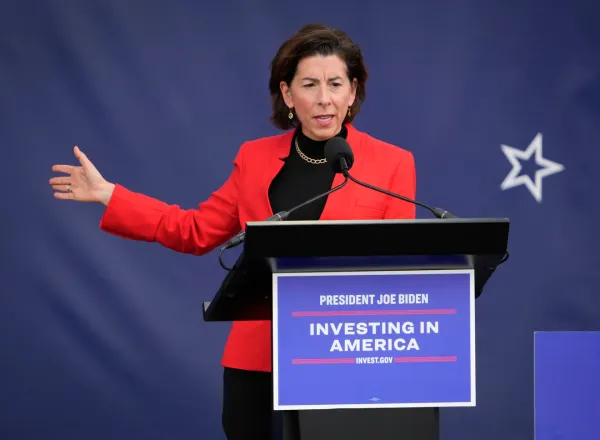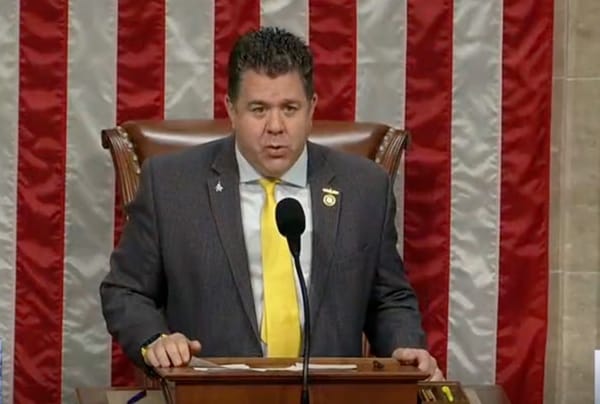With Broadband as Driver for Today’s Consumer Electronics Technologies, Here’s the Top 10 Issues for 2013
WASHINGTON, January 13, 2013 – Starting the New Year off by attending the Consumer Electronics Show in Las Vegas provides a wonderful lens with which to focus on the year ahead in technology. Today, broadband is the driver for almost all of today’s digital technologies. Of the hundreds of examples o
WASHINGTON, January 13, 2013 – Starting the New Year off by attending the Consumer Electronics Show in Las Vegas provides a wonderful lens with which to focus on the year ahead in technology.
Today, broadband is the driver for almost all of today’s digital technologies. Of the hundreds of examples of digital technologies that I experienced last week, I cannot recall a single one of them that wasn’t broadband-enabled.
Going to the show allows one to double-check one’s instincts for top issues in broadband. Here’s our list of the 10 most significant broadband developments to watch for in 2013 — and your guide to learning more about each of these subjects through the Broadband Breakfast Club, your window on broadband.
1. Data Caps for Wireless Broadband, the Spectrum Crunch, and Wireless Home Networking
The two largest wireless providers, AT&T and Verizon Wireless, have moved to a pay-per-megabit model for the consumption of wireless broadband. Consumers strongly resisted data caps for cable and DSL services, but have warmed to paying usage-based rates for wireless data. And users are chewing up data on their Samsung Galaxy phones, their Microsoft Windows Surface tablets, and on Apple iPhones and iPads and iPods. So long as users have both a wired home broadband connection, with a second screen that accesses Wi-Fi, broadband costs are manageable. Policy questions arise when users must rely exclusively on third-generation or fourth-generation wireless networks. This issue will be explored in the February 19, 2013, Broadband Breakfast Club.
2. How Will FirstNET Improve Public Safety Communications?
One of the reasons that wireless providers insist on tiered pricing for wireless broadband is the spectrum crunch occasioned by more and more data usage over 3G and 4G wireless networks. This is one of several reasons why the government has been easing television broadcasters out of the airwaves, and beginning to make the most desirable frequencies available for other uses. Two of these high-value uses are for public safety communications and commercial mobile broadband. FirstNET, the nationwide, public-safety network called for in legislation last February, could provide key answers to weaknesses in response by police, fire and emergency response officials. This issue will be explored in the March 19, 2013, Broadband Breakfast Club.
3. Smart Cars, Data Sensors, and Machine-to-Machine Communications: What’s Coming Up this Year
The increasingly small sizes of silicon transistors, coupled with greater broadband ubiquity, is making it possible to envision a world of machine-to-machine communications. Typical families now have more than five or even 10 broadband-connected devices — expect that number to rapidly multiply in the coming year. One of the most exciting developments in machine-to-machine communications exists in the world of smart cars. One Verizon Communications device on display at the Consumer Electronics Show was a Delphi Automotive plug-in, for sale as an aftermarket plug-in designed to send location, diagnostic, speed and mileage information about your car to a web-enabled portal. But how will smarter cars begin to affect vehicle safety? This issue will be explored in the April 16, 2013, Broadband Breakfast Club.
4. Becoming a Gigabit Nation: What Have we Learned About Ultra-High Speed from Google, Comcast, Verizon and Others?
Speaking at the show, FCC Chairman Julius Genachowski lauded the nation’s progress on broadband speeds. “More and more [providers] are thinking of speeds in terms of gigabits instead of megabits,” he said in an interview with Consumer Electronics Association President Gary Shapiro. But he said it still wasn’t enough. “We need more gigabit test beds in this country. We are in a global bandwidth race, and we don’t want to be behind the rest of the world on speed.” More and more gigabit or near-gigabit initiatives are now available for consumers and we need to learn from their progress. This issue will be explored in the May 21, 2013, Broadband Breakfast Club.
5. Global and Mobile: How Wireless Broadband Spurs Economic Development
Many celebrities flock to the Consumer Electronics Show. One of them, former President Bill Clinton, delivered a substantive message about the impact that mobile smartphones are having upon the developing world. And the major manufacturers are paying attention to this need. One of the show’s big announcements concerned the creation of a chipset design from Intel that will enable cheaper smart phones. What does the developing world need in a mobile broadband network to spur economic development? This issue will be explored in the June 18, 2013, Broadband Breakfast Club.
6. Smart Energy: Broadband and the Green Revolution
Advanced energy was a big theme emphasized by a variety of companies, from Ford to Panasonic to Verizon to Qualcomm. Information technology is being asked to play a supportive role in helping to reduce the world’s carbon footprint. This can be done by helping regulate energy consumption in homes, buildings and cars. Technology can also provide new service opportunities (e.g., telemedicine) that help avoid additional emissions. How can broadband be harnessed as a green technology? This issue will be explored in the July 16, 2013, Broadband Breakfast Club.
7. Over the Top: Broadband Video Challenges Cable and Broadcast Programming
From Dish Network’s Hopper with Sling, which enables content sharing beyond the home; to Apple’s and Netflix’s attempts to offer a la carte television programming; to the many manufacturers designing smart and customized televisions, the next year is likely to bring new challenges and opportunities for video programmers. “Over the top” video is the next frontier for pay television programming. Is it a threat or an opportunity for cable operators? This issue will be explored in the September 17, 2013, Broadband Breakfast Club.
8. Mobile Health: Will Wireless Devices Help Solve the Nation’s Health Crises?
In the “Last Gadget Standing” event at the Consumer Electronics Show, attendees were invited to put forward their proposals for “killer applications” that will change lives for the better. Three of the 10 finalists were mobile health applications. One was a diabetes monitor. The other conducted a battery of heart measurements. A third continuously provided global positioning service information about fitness and motion. These were just a sample of the mobile wireless technologies that could begin to provide answers to our nation’s health care problems. This issue will be explored in the October 15, 2013, Broadband Breakfast Club.
9. Changes to Patent Law and the Landscape for Innovation
One surprising significant issue addressed in the show were the challenges that so-called “patent trolls” can cause to entrepreneurs. An unexpectedly strong turn-out greeted the discussion on patent reform, which was also highlighted in the keynote address by CEA’s Shapiro. This issue will be explored in the November 19, 2013, Broadband Breakfast Club.
10. Will Tablets Dethrone Computers as the Gateway to Sustainable Broadband Adoption?
Previously, technology prognosticators focused on the three-screen world: televisions, computers and mobile devices such as phones and tablets. Coming to CES this year forced me to think that we are really entering a two-screen world: a big screen at home (a TV) and a mobile screen that you take with you. Sure, the computer isn’t going away anytime soon, but the bulk of the innovation was on the big screen and the little screen. As consumers who have not yet adopted broadband begin to use mobile phones and tablets for serious online activity, it will be important to assess the best way to reach those currently not online.
Although this is one issue for which we haven’t yet scheduled an upcoming Broadband Breakfast Club, we expect it will be discussed at this Tuesday’s event, “The President’s and Congress’ New Broadband Agenda” on Tuesday, January 15, 2013, from 8 a.m. to 10 a.m. Please join us! Register at http://broadbandbreakfast.eventbrite.com
Follow Broadband Breakfast’s coverage of the broadband economy at http://twitter.com/broadbandcensus. Our goals at #CES2013 last week were to promote the upcoming series of Broadband Breakfast Club events; to get the latest information on how broadband is driving digital technologies in 2013; and to test ideas for a book on technology, broadband, and digital media that Broadband Breakfast’s Publisher Drew Clark plan to write in 2013. He is on Google+ and Twitter.







